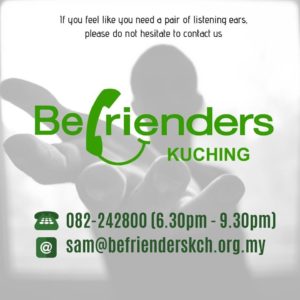- Avoid dramatic / graphic headlines that sensationalize or unintentionally glamorize the suicide. This is particularly relevant for celebrities or high profile individuals who died from suicide. Refrain from positioning the story too prominently, for e.g. on the front page.
- Avoid pictures of the scene of suicide, particularly if this is a place where people frequently attempt suicide.
- Avoid using pictures of the deceased, or previous people who died from suicide.
- Avoid dramatic images of an ongoing suicide attempt, such as a person standing on a ledge
- Use appropriate terms and phrases to destigmatize suicide and minimize distress to bereaved family members. For e.g. say “died by suicide” rather than “committed suicide”, “successfully attempted suicide”, etc.
- Excessive details of the suicide method can prompt suicide contagion. Avoid giving too much detail, particularly when the method used is unusual. Keep the information to the bare minimum necessary (e.g. hanged themselves, died from an overdose).
- Intimate details of the suicide victim’s circumstances and problems prior to suicide may result in vulnerable individuals over-identifying with the victim and attempting suicide as well. Avoid giving such details as well as any other suggestions that the suicide was due to a single incident, i.e. loss of a job, relationship breakdown, etc.
- Do not report the contents of a suicide note, if there is one.
- If there is a need to comment further on the suicide, present it as a tragedy and an avoidable loss. Try to convey the message that a variety of risk factors (e.g. alcohol abuse, untreated mental health illnesses) contribute to the suicide, and that most people who are suicidal demonstrate warning signs.
- If there is a need to delve deeper into a particular suicide incident, try to highlight in a sensitive manner the emotional devastation that suicide has wrought on family and friends.
- Avoid sensational statements that have no factual basis in empirical research data, for e.g. labelling certain locations as suicide hotspots, or that suicide has become an epidemic in certain groups or communities.
- Seek opinion and advice from medical authorities or suicide prevention experts. Provide a summary of existing treatment options available, as well as success stories of those who overcame a suicidal crisis.
- Provide contact information for local sources of support for people experiencing emotional distress or suicidal ideation (for e.g. in Malaysia this would be the Befrienders branches available in various states as well as Lifeline Association of Malaysia).
May 2019
Further references
The pointers above are abbreviations from a more comprehensive set of media reporting guidelines on suicide
available from international bodies that focus on suicide prevention. Please refer to them for further
information.
- https://www.samaritans.org/about-samaritans/media-guidelines/
- https://www.who.int/mental_health/mhgap/evidence/suicide/q9/en/
- http://time.com/5351106/media-suicide-coverage/
- http://reportingonsuicide.org/
For further inquiries or feedback, please contact The Befrienders KL at
Source: The Befrienders KL



